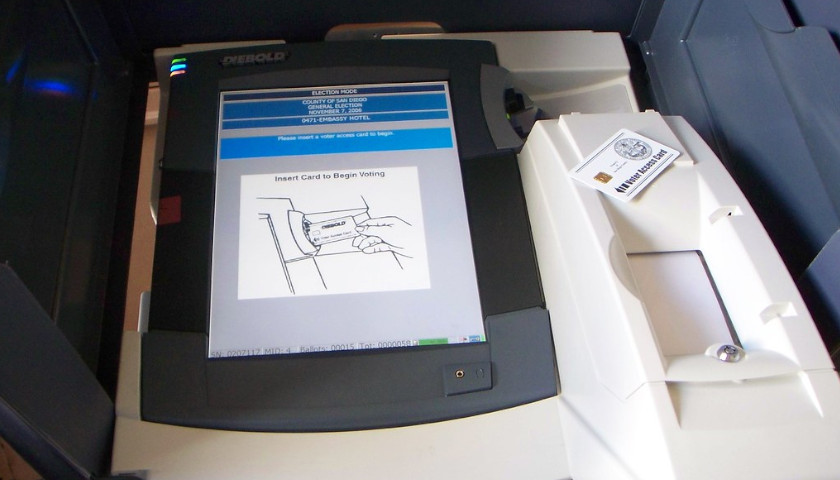by Scott McClallen
Michigan kicked off a $34 million marketing and retention campaign to attract people to fill 3,000 electric vehicle jobs.
Lt. Gov. Garlin Gilchrist II called it the “nation’s largest-ever campaign” to promote electric vehicle careers.
“As we work to make an electrified future a reality, it’s no surprise that once again, Michigan is being recognized as a leader in shepherding this new evolution,” Gilchrist said in a statement.
The state claims as many as 300,000 EV jobs will be available by 2030.
The $34 million is part of the $115.6 million the Legislature allocated to the Michigan Economic Development Corporation last year.
John Mozena, president of the Center for Economic Accountability, a nonprofit organization for transparent economic development policy, told The Center Square the program is “another example of Michigan politicians’ disastrous love affair with tying our state’s future to the booms and busts of the auto industry.”
Mozena said Michigan is weighting its portfolio on “one volatile industry” and should instead create an environment in which all companies can thrive.
Mozena said 3,000 jobs is a small number compared to Michigan’s workforce of 4.8 million.
“Throwing millions of dollars at 350 students, filling 3,000 open jobs or even the prediction that there will be 300,000 new jobs in Michigan by the end of the decade thanks to the EV transition are rounding errors at best when compared to the state’s workforce as a whole,” Mozena said in an email.
Over the past few years as automakers pivot to EVs, they’re also laying off significant numbers of people. As Michigan struck a subsidy deal with Ford to create 3,000 jobs, the automaker announced 3,000 layoffs in 2022.
He said the companies should fund recruiting programs, not taxpayers.
“If automakers in the state have this many jobs to fill, then they’re perfectly capable of running a program like this themselves, whether that’s on their own or through some industry-funded nonprofit like the Society for Automotive Engineers,” Mozena said. “They’re making billions in profits, they can train their own workers. There’s no reason that employers in other industries who have their own workforce problems to solve should be paying taxes to give the automakers an advantage in hiring in-demand state university graduates.”
The one-year pilot program will provide $10,000 in scholarships to up to 350 students at the University of Michigan, Michigan State University, and Michigan Technological University if they sign a letter of employment with one of the approved companies and commit to the job for 12 months in Michigan.
The scholarship will be provided to the university, which will credit it toward the student’s tuition. If the student’s tuition is already paid, the university will issue a check to the student.
The EV signing bonus awards funds to students on a first-come first-serve basis accepting internships or jobs with participating employers. About $5,000 will be awarded to juniors who accept an internship with a partner employer in Michigan and commit to completing the full internship. For seniors who received a previous award as a junior, an additional $5,000 will be awarded if they accept a full-time position with an EV-partner employer in Michigan and commit to staying in the state for one year.
Eligibility for the 2023-2024 cohort is that students must:
- Be interested in a career as an electrical engineer or software developer.
- Have a declared, or intent to declare, relevant major.
- Commit to career events with employers.
- For eligibility for spring 2023 and fall 2023 scholarships, receive and accept a job offer between March 1, 2023, and December 31, 2023, as an electrical engineer or software developer with a participating Michigan employer.
– – –
Scott McClallen is a staff writer covering Michigan and Minnesota for The Center Square. A graduate of Hillsdale College, his work has appeared on Forbes.com and FEE.org. Previously, he worked as a financial analyst at Pepsi.
Photo “Garlin Gilchrist II” by Michigan.gov. Background Photo “Electric Vehicles” by Plug’n Drive. CC BY-SA 2.0.









Dam waist of taxpayers money and the vile politicians know this that money needs to go into Social Security that these politicians have been stealing from for 60-70 years, plus all politicians need a 50% cut in pay No retirement benefits No medical benefits, unless obamacare that is all they are entitled to, never have anything better than taxpayers it’s our money we pay their wages time they give up extra benefits like the Taxpayers have had to do thanks to these lying cheating stealing perverted politicians
EV Issues:
Range
Battery replacement costs
State electric rates
Lack Charging Centers
No roadside Service
Cold effects Range on batteries
Weight
Locked In/Out & Hacking
Unrepaired Charging Centers